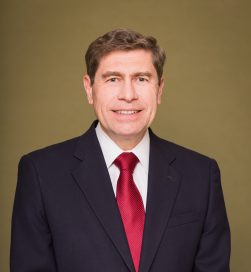 The way you manage your recovery is just as crucial as your plastic surgery. You’ve done all your research, visited Plastic Surgeons and found the right one for you, you’ve planned downtime following your procedure, and you have your ride home from the surgery center all lined up.
The way you manage your recovery is just as crucial as your plastic surgery. You’ve done all your research, visited Plastic Surgeons and found the right one for you, you’ve planned downtime following your procedure, and you have your ride home from the surgery center all lined up.
After your surgery – NOW WHAT?
*note the capital letters – intentional, because that’s a really big question. and an all-important one.
WHEN YOU GO HOME AFTER SURGERY
The surgery may be concluded, but the process of transformation, and especially healing, are not. Not even close.
As part of your pre-surgical plan, you’ve had numerous discussions with your doctor and nurses about what to expect. And, you’ve received detailed instructions about post-surgery care, including wound care, medications and dosages, when to move, how much to move, what to watch out for, diet, work, and everything in between.
INSTRUCTIONS ARE INSTRUCTIONS
Why the emphasis? Even when patients are told how vital it is to their recovery, their results, and their health, they may choose to ignore the things they don’t like.
- Do Not Ignore the Doctor’s Instructions.
- They are not suggestions.
Think of them like traffic signals. Red light? Not a suggestion. Sharp curve ahead? Be cautious and slow down. We know you get the idea, but we really cannot repeat it enough. It’s not just for the sake of your appearance or vanity- your health and well-being depend on it.
Ok, so you’re home now, with your very important instructions and guidelines. You have someone with you.
- A responsible adult is with you, and will remain with you for at least 24 hours. This person will assist you with all sorts of tasks, including bathroom visits, medication, meals, general comfort, and being there should any emergency arise.
- If your instructions say so, you should begin some light movement, depending on the scope of your surgery.
- You should also remind yourself that even with ‘small’ surgeries, your results will not be instant. Understand that healing takes some time, and swelling may take considerable time to resolve.
- If you do have a problem or a concern, especially in the initial days following your procedure, call your doctor.
HOW LONG WILL IT TAKE TO RECOVER? 
This depends on a number of factors. How extensive was your surgery, did you have one procedure, or more than one in a single session, your age, lifestyle factors, and general physical condition.
Since you are unique, and each surgery and patient is individual, healing and recovery times are naturally going to vary. What we can do, is give you some very general guidelines for some of the most popular procedures.
LIPOSUCTION: Recovery is generally achieved within 4-6 weeks. That doesn’t mean you’re “down” for that length of time. You may be instructed to do light movements right away, to help with blood flow, and discourage blood clotting. Most patients feel they can return to work within 3 or 4 days, for what’s considered ‘light’ activity (if their work involves an office and desk-centered environment). Heavy lifting, and full physical activity would not be recommended for several weeks. Light physical activity might be resumed within about 10 days, depending on your comfort level. Again, leave lifting heavy objects, including the kids, to someone else for the time being.
Liposuction patients are instructed to wear compression garments, usually for 3 to six weeks. These garments may not always feel comfortable, but aid considerably in healing, and in helping to minimize swelling. Even after a return to work and normal activity, some slight swelling may remain for a period of months.
 BREAST AUGMENTATION and BREAST LIFT: Patients may experience pain and tenderness, especially during the first few days following a breast augmentation. Many feel well enough to return to work (again, light work activity) within several days to a week. Exercise that may cause you to strain or pull the muscles in the area of surgery, is not recommended for several weeks. Consult with your doctor about care of any dressings you may have. There may be restrictions on showering at first, and on soaking or swimming until incisions are healed. Most patients resume normal activities within 3 to 6 weeks.
BREAST AUGMENTATION and BREAST LIFT: Patients may experience pain and tenderness, especially during the first few days following a breast augmentation. Many feel well enough to return to work (again, light work activity) within several days to a week. Exercise that may cause you to strain or pull the muscles in the area of surgery, is not recommended for several weeks. Consult with your doctor about care of any dressings you may have. There may be restrictions on showering at first, and on soaking or swimming until incisions are healed. Most patients resume normal activities within 3 to 6 weeks.
TUMMY TUCK: This tends to be a more involved surgery, and will require a bit more rest. You’ll appreciate (and need) some help with household duties for up to a week, while you allow your newly-tightened muscles and skin to heal. Once again, your doctor will want you to be up and walking around (with help) as soon as possible, but leave the bending and lifting to others for a few weeks. Patients often return to work within 2 to 3 weeks. Exercise may have to wait a week or so more. You may have a compression garment, and/or drains, depending on your individual case. Swelling may take some time to fully resolve, and reveal your true results.
EYELID LIFT (BLEPHAROPLASTY): 1 to 2 weeks ‘off’ for most patients. You’ll have instructions for minimizing swelling, and an appointment for having your stitches removed, and your incisions checked. There may be some bruising, and you should check with your doctor to see when it’s safe to use makeup around the eye area. You’ll want to rest the eyes for a few days, avoid lifting objects, and strenuous activity. Within 2 weeks, the swelling and bruising should diminish considerably.
RHINOPLASTY (NOSE SURGERY): You may be going home, with a splint at the surgical site, and packing in the nose. These may be removed within about a week by your surgeon, but you’ll need to be patient as your nose is healing. The initial recovery time, is usually about 1 to 2 weeks. But, the nose is not an area of instant results. Because of the treatment to the bone, and cartilage, swelling is more persistent, and healing takes longer. After a couple of weeks, work and light activities can be resumed. For the first six weeks following surgery, patients need to be very careful to avoid bumping the nose, or wearing glasses. The nasal bones will still be unstable during this period, and impact or pressure can affect their healing, and your result. Rhinoplasty patients should prepare to be partners in their after-care for months as everything heals. Some swelling may be present for up to a year.
We’ve given you, as we said, very general guidelines for recovery, for some of the most popular surgical choices.
It is true that everyone, and every situation is different. Some patients find it helpful to hear from other patients. There are many online forums (such as RealSelf.com) which allow cosmetic surgery patients to share their recovery journeys, tips, and even photos. Please remember, though, that medical advice should come from your own doctor. As you move toward your surgery and your cosmetic goals, do keep an open dialogue with your doctor, and plan ahead for your recovery, and your results. Good luck!
[Dr. Vincent Lepore is a Board-Certified, Stanford-trained Plastic Surgeon in San Jose, California. He and his staff are happy to answer your questions. Please call to schedule a free Cosmetic Consultation, at (408) 356-4241.]



